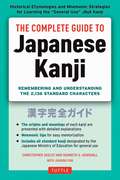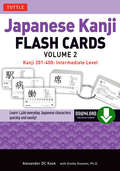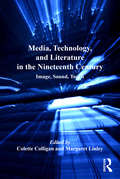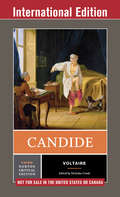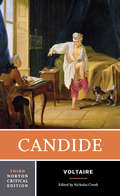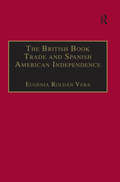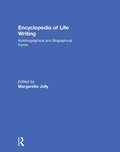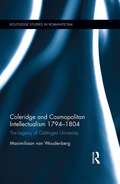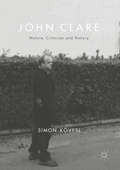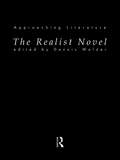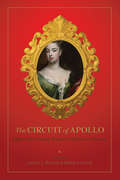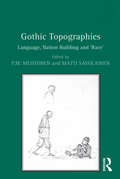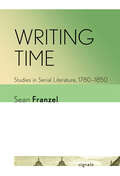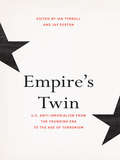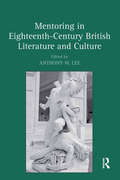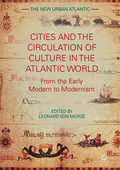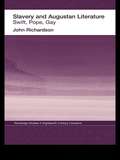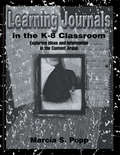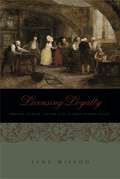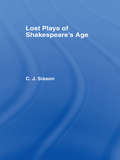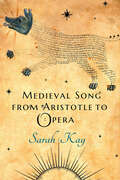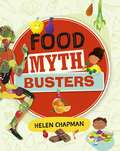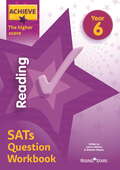- Table View
- List View
The Complete Guide to Japanese Kanji: Remembering and Understanding the 2,136 Standard Characters
by Kenneth G. Henshall Christopher Seely Jiageng FanLearn over 2,000 Japanese Kanji characters with this user-friendly Japanese language-learning book.This unique Kanji study guide provides a comprehensive introduction to all the Kanji characters on the Japanese Ministry of Education's official Joyo ("General Use") list-providing detailed notes on the historical development of each character as well as all information needed by students to read and write them. As fascinating as it is useful, this is the book every Japanese language learners keeps on his or her desk and visits over and over.This Kanji book includes: Clear, large-sized entries All of the General Use Joyo Kanji Characters Japanese readings and English meanings stroke-count stroke order usage examples mnemonic hints for easy memorization The components which make up each character are detailed and the Kanji are graded in difficulty according to Ministry of Education guidelines, allowing students to prioritize the order in which the Kanji are learned and track their progress. This book is essential to anyone who is planning to take the official Japanese Language Proficiency Test (JLPT) and will appeal to beginning students as well as those who wish to attain higher-level mastery of the Japanese language. It is the only book that also provides historical and etymological information about the Japanese Kanji.This latest edition has been updated to include all of the 2,136 Kanji on the expanded Joyo list issued by the Japanese government in 2010. Many entries have been revised to include the most recent research on character etymologies.
The Complete Guide to Japanese Kanji: Remembering and Understanding the 2,136 Standard Characters
by Kenneth G. Henshall Christopher Seely Jiageng FanLearn over 2,000 Japanese Kanji characters with this user-friendly Japanese language-learning book.This unique Kanji study guide provides a comprehensive introduction to all the Kanji characters on the Japanese Ministry of Education's official Joyo ("General Use") list-providing detailed notes on the historical development of each character as well as all information needed by students to read and write them. As fascinating as it is useful, this is the book every Japanese language learners keeps on his or her desk and visits over and over.This Kanji book includes: Clear, large-sized entries All of the General Use Joyo Kanji Characters Japanese readings and English meanings stroke-count stroke order usage examples mnemonic hints for easy memorization The components which make up each character are detailed and the Kanji are graded in difficulty according to Ministry of Education guidelines, allowing students to prioritize the order in which the Kanji are learned and track their progress. This book is essential to anyone who is planning to take the official Japanese Language Proficiency Test (JLPT) and will appeal to beginning students as well as those who wish to attain higher-level mastery of the Japanese language. It is the only book that also provides historical and etymological information about the Japanese Kanji.This latest edition has been updated to include all of the 2,136 Kanji on the expanded Joyo list issued by the Japanese government in 2010. Many entries have been revised to include the most recent research on character etymologies.
Japanese Kanji Flash Cards Volume 2: Intermediate Level (Downloadable Material Included)
by Emiko Konomi Alexander KaskEverything you need to learn 200 everyday Japanese kanji characters is here in this ebook!Flash cards are an essential tool in memorizing words when you are learning a new language. In Japanese Kanji Flash Cards Kit, Volume 2, you'll get all the tools needed to learn 200 everyday Japanese kanji, following on from the 200 kanji introduced in Volume 1 of this series.This Japanese language ebook includes: 200 flash cards featuring commonly used characters. Downloadable audio recordings of over 1,200 words and phrases from a native speaker. A 32-page study booklet with sorting indexes and practice tips. Each expertly designed flash card in this ebook offers core information about the meanings, pronunciations, vocabulary, and usage for each character along with memorable phrases and drawings to help you learn the kanji. A stroke-order diagram shows how to write the kanji correctly. You can also sort the cards into smaller sets so you can learn or review them in batches and help to remember the kanji character effectively.
Media, Technology, and Literature in the Nineteenth Century: Image, Sound, Touch (The\nineteenth Century Ser.)
by Margaret LinleyOperating at the intersection where new technology meets literature, this collection discovers the relationship among image, sound, and touch in the long nineteenth century. The chapters speak to the special mixed-media properties of literature, while exploring the important interconnections of science, technology, and art at the historical moment when media was being theorized, debated, and scrutinized. Each chapter focuses on a specific visual, acoustic, or haptic dimension of media, while also calling attention to the relationships among the three. Famous works such as Wordsworth's "I wandered lonely as a cloud" and Shelley's Frankenstein are discussed alongside a range of lesser-known literary, scientific, and pornographic writings. Topics include the development of a print culture for the visually impaired; the relationship between photography and narrative; the kaleidoscope and modern urban experience; Christmas gift books; poetry, painting and music as remediated forms; the interface among the piano, telegraph, and typewriter; Ernst Heinrich Weber's model of rationalized tactility; and how the shift from visual to auditory telegraphic instruments amplified anxieties about the place of women in nineteenth-century information networks. Full of surprising insights and connections, the collection offers new impetus for stimulating historical conversations and debates about nineteenth-century media, while also contributing fresh perspectives on new media and (re)mediation today.
Candide (Norton Critical Editions #0)
by Voltaire Nicholas CronkCandide has been delighting readers since 1759 with its satiric wit, provocations, and warnings. The novella has never been out of print and has been translated into every conceivable language. The text of this Norton Critical Edition remains that of Robert M. Adams’s superlative translation, accompanied by explanatory annotations. The Norton Critical Edition also includes: · A full introduction by Nicholas Cronk. · Six background studies of Enlightenment ideas and themes (by Richard Holmes, Adam Gopnik, W. H. Barber, Dennis Fletcher, Haydn Mason, and Nicholas Cronk), five of these new to the Third Edition. · Seven critical essays—five of them new to this edition—representing a wide range of approaches to Candide. Contributors include J. G. Weightman, Robin Howells, James J. Lynch, Philip Stewart, Erich Auerbach, and Jean Starobinski. · A revised and expanded Selected Bibliography.
Candide (Third Edition) (Norton Critical Editions)
by Voltaire Nicholas CronkCandide has been delighting readers since 1759 with its satiric wit, provocations, and warnings. The novella has never been out of print and has been translated into every conceivable language. The text of this Norton Critical Edition remains that of Robert M. Adams’s superlative translation, accompanied by explanatory annotations. The Norton Critical Edition also includes: · A full introduction by Nicholas Cronk. · Six background studies of Enlightenment ideas and themes (by Richard Holmes, Adam Gopnik, W. H. Barber, Dennis Fletcher, Haydn Mason, and Nicholas Cronk), five of these new to the Third Edition. · Seven critical essays—five of them new to this edition—representing a wide range of approaches to Candide. Contributors include J. G. Weightman, Robin Howells, James J. Lynch, Philip Stewart, Erich Auerbach, and Jean Starobinski. · A revised and expanded Selected Bibliography.
The British Book Trade and Spanish American Independence: Education and Knowledge Transmission in Transcontinental Perspective
by Eugenia Roldán VeraThe British Book Trade and Spanish American Independence is a pioneering study of the export of books from Britain to early-independent Spanish America, which considers all phases of production, distribution, reading, and re-writing of British books in the region, and explores the role that these works played in the formation of national identities in the new countries. Analysing in particular the publishing house of Rudolph Ackermann, which dominated the export of British books in Spanish to the former colonies in the 1820s, it discusses the ways in which the printed form of these publications affected the knowledge conveyed by them. After a survey of the peculiar characteristics of print culture in early-independent Spanish America and the trends in the import of European books in the region, the author examines the operation of Ackermann's publishing enterprise. She shows how the collaborative nature of this enterprise, involving a number of Spanish American diplomats as sponsors and Spanish exiles as writers and translators, shaped the characteristics of its publications, and how the notion of 'useful knowledge' conveyed by them was deployed in the service of both commercial and educational concerns. The hitherto unexplored mechanisms of book import, distribution, wholesale and retailing in Spanish America in the 1820s are also analysed as is the way in which the significance of the knowledge transmitted by those books shifted in the course of their production and distribution. The author examines how the question-and-answer form of Ackermann's textbooks constrained both publishers and writers and oriented their readers' relation with the texts. She then looks at the various ways in which foreign knowledge was appropriated in the construction of individual, social, national, and continental identities; this is done through the study of a number of individual reading experiences and through the analysis of the editions and adaptations of Ackermann's textbooks during the nineteenth century.
Encyclopedia of Life Writing: Autobiographical and Biographical Forms
by Margaretta JollyFirst published in 2001. Routledge is an imprint of Taylor & Francis, an informa company.
Coleridge and Cosmopolitan Intellectualism 1794-1804: The Legacy of Göttingen University (Routledge Studies in Romanticism)
by Maximiliaan van WoudenbergViewing Samuel Taylor Coleridge's pursuit of continental intellectualism through the lens of cosmopolitanism, Maximiliaan van Woudenberg examines the so-called 'German Mania' of the writer in the context of the intellectual history of the university. At a time when the confessional model of Oxbridge precluded a liberal education in England, van Woudenberg argues, Coleridge's pursuit of continental methodologies and networks encountered at the University of Göttingen anticipated the foundation of the modern von Humboldt research-university model. Founded by the Hanoverian rulers of Great Britain, this cosmopolitan institution of knowledge successfully fostered cross-cultural interchange between German and British intellectuals during the latter half of the eighteenth century. van Woudenberg links the origins of Coleridge's engagement with European intellectualism to his first encounter with the innovations of a Reform university during his studies at the University of Göttingen in 1799, a period that many critics and biographers believe spoiled his poetry. Drawing on hitherto unexamined primary records and documents in German Kurrentschrift, this study shows Coleridge to be a visionary whose cross-cultural dissemination of continental intellectualism in England was ahead of its time and presents an intriguing episode in Cosmopolitan Romanticism by a major canonical figure.
John Clare
by Simon KövesiJohn Clare (1793–1864) has long been recognized as one of England's foremost poets of nature, landscape and rural life. Scholars and general readers alike regard his tremendous creative output as a testament to a probing and powerful intellect. Clare was that rare amalgam ‒ a poet who wrote from a working-class, impoverished background, who was steeped in folk and ballad culture, and who yet, against all social expectations and prejudices, read and wrote himself into a grand literary tradition. All the while he maintained a determined sense of his own commitments to the poor, to natural history and to the local. Through the diverse approaches of ten scholars, this collection shows how Clare's many angles of critical vision illuminate current understandings of environmental ethics, aesthetics, Romantic and Victorian literary history, and the nature of work.
The Realist Novel (Approaching Literature)
by Dennis WalderThis book guides the student through the fundamentals of this enduring literary form. By using carefully selected novels and discussing a wide range of authors including Emily Dickinson and John Kincaid, the authors provide a lively examination of the particular themes and modes of realist novels of the period. This is the only book currently available to provide such a wide range of primary and secondary material and is the prefect resource for a literature degree.
The Circuit of Apollo: Eighteenth-Century Women's Tributes to Women (Early Modern Feminisms)
by Claudia Thomas Kairoff Nicolle Jordan Christine Gerrard Kathryn R. King Catherine Ingrassia Laura Tallon Natasha Duquette Susan S. Lanser Katharine Kittredge Shelley King Betty A. SchellenbergWritten by a combination of established scholars and new critics in the field, the essays collected in Circuit of Apollo attest to the vital practice of commemorating women’s artistic and personal relationships. In doing so, they illuminate the complexity of female friendships and honor as well as the robust creativity and intellectual work contributed by women to culture in the long eighteenth century. Women’s tributes to each other sometimes took the form of critical engagement or competition, but they always exposed the feminocentric networks of artistic, social, and material exchange women created and maintained both in and outside of London. This volume advocates for a new perspective for researching and teaching early modern women that is grounded in admiration.Distributed for the University of Delaware Press
Gothic Topographies: Language, Nation Building and ‘Race’
by Matti SavolainenIn demonstrating the global reach of Gothic literatures, this collection takes up the influence of the Gothic mode in literatures that may be geographically remote from one another but still share related issues of minor languages, nation building, place and race. Suggesting that there is a parallel between certain motifs and themes found in the Gothic of the North (Scandinavia, Northern Europe and Canada) and South (Australia, South Africa and the US South), the essays explore the transgressions and confusion of borders and limits, whether they be linguistic, literary, generic, class-based, gendered or sexual. The volume includes essays on a wide diversity of authors and topics: Jan Potocki, Gustav Meyrink, William Godwin, Alan Hollinghurst, Marlene van Niekerk, John Richardson, antislavery discourse and the Gothic imagination, the Australian aboriginal Gothic, vampires of Post-Soviet Gothic society, Danish, Swedish and Finnish fiction and film, and the Canadian female Gothic and the death drive. What distinguishes this book from other collections on the Gothic is the coverage of themes and literatures that are either lacking in the mainstream research on the Gothic or are referred to only briefly in other book-length studies. Experts in the Gothic and those new to the field will appreciate the book's commitment to situating Gothic sensibilities in an international context.
Writing Time: Studies in Serial Literature, 1780–1850 (Signale: Modern German Letters, Cultures, and Thought)
by Sean FranzelWriting Time shows how serial literature based in journals and anthologies shaped the awareness of time at a transformative moment in the European literary and political landscapes. Sean Franzel explores how German-speaking authors and editors "write time" both by writing about time and by mapping time itself through specific literary formats.Through case studies of such writers as F. J. Bertuch, K. A. Böttinger, J. W. Goethe, Ludwig Börne, and Heinrich Heine, Franzel analyzes how serial writing predicated on open-ended continuation becomes a privileged mode of social commentary and literary entertainment and provides readers with an ongoing "history" of the present, or Zeitgeschichte. Drawing from media theory and periodical studies as well as from Reinhart Koselleck's work on processes of temporalization and "untimely" models of historical time, Writing Time presents "smaller" literary forms—the urban tableau, cultural reportage, and caricature—as new ways of imagining temporal unfolding, recentering periodicals and other serial forms at the heart of nineteenth-century print culture.
Empire’s Twin: U.S. Anti-imperialism from the Founding Era to the Age of Terrorism
by Jay Sexton Ian TyrrellAcross the course of American history, imperialism and anti-imperialism have been awkwardly paired as influences on the politics, culture, and diplomacy of the United States. The Declaration of Independence, after all, is an anti-imperial document, cataloguing the sins of the metropolitan government against the colonies. With the Revolution, and again in 1812, the nation stood against the most powerful empire in the world and declared itself independent. As noted by Ian Tyrrell and Jay Sexton, however, American "anti-imperialism was clearly selective, geographically, racially, and constitutionally." Empire's Twin broadens our conception of anti-imperialist actors, ideas, and actions; it charts this story across the range of American history, from the Revolution to our own era; and it opens up the transnational and global dimensions of American anti-imperialism. By tracking the diverse manifestations of American anti-imperialism, this book highlights the different ways in which historians can approach it in their research and teaching. The contributors cover a wide range of subjects, including the discourse of anti-imperialism in the Early Republic and Civil War, anti-imperialist actions in the U.S. during the Mexican Revolution, the anti-imperial dimensions of early U.S. encounters in the Middle East, and the transnational nature of anti-imperialist public sentiment during the Cold War and beyond. Contributors: Laura Belmonte, Oklahoma State University; Robert Buzzanco, University of Houston; Julian Go, Boston University; Alan Knight, University of Oxford; Ussama Makdisi, Rice University; Erez Manela, Harvard University; Peter Onuf, Robert H. Smith International Center for Jefferson Studies, Monticello, and University of Virginia; Jeffrey Ostler, University of Oregon; Patricia Schechter, Portland State University; Jay Sexton, University of Oxford; Ian Tyrrell, University of New South Wales
Mentoring in Eighteenth-Century British Literature and Culture
by Anthony W. LeeIn the first collection devoted to mentoring relationships in British literature and culture, the editor and contributors offer a fresh lens through which to observe familiar and lesser known authors and texts. Employing a variety of critical and methodological approaches, which reflect the diversity of the mentoring experiences under consideration, the collection highlights in particular the importance of mentoring in expanding print culture. Topics include John Wilmot the Earl of Rochester's relationships to a range of role models, John Dryden's mentoring of women writers, Alexander Pope's problematic attempts at mentoring, the vexed nature of Jonathan Swift's cross-gender and cross-class mentoring relationships, Samuel Richardson's largely unsuccessful efforts to influence Urania Hill Johnson, and an examination of Elizabeth Carter and Samuel Johnson's as co-mentors of one another's work. Taken together, the essays further the case for mentoring as a globally operative critical concept, not only in the eighteenth century, but in other literary periods as well.
Cities and the Circulation of Culture in the Atlantic World: From the Early Modern to Modernism (The New Urban Atlantic)
by Leonard MorzéThis book provides a much-needed comparative approach to the history of cities by investigating the dissemination of cultural forms between cities of the Atlantic world. The contributors attend to the various forms and norms of cultural representation in Atlantic history, examining a wealth of diverse topics such as the Portuguese Atlantic; the Spanish Empire; Guy Fawkes and the conspiratorial rhetoric of slaves; Albert-Charles Wulffleff and the Parc-Musée of Dakar; and the writings of Jane Austen, Alexis de Tocqueville, Benjamin Franklin, and others. By interpreting Atlantic urban history through sustained attention to customs and representational forms, an international group of nine contributors demonstrate the power of culture in the making of Atlantic urban experience, even as they acknowledge the harsh realities of economic history.
Slavery and Augustan Literature: Swift, Pope and Gay (Routledge Studies in Eighteenth-Century Literature)
by Dr J RichardsonSlavery and Augustan Literature investigates slavery in the work of Jonathan Swift, Alexander Pope and John Gay. These three writers were connected with a Tory ministry, which attempted to increase substantially the English share of the international slave trade. They all wrote in support of the treaty that was meant to effect that increase. The book begins with contemporary ideas about slavery, with the Tory ministry years and with texts written during those years. These texts tend to obscure the importance of the slave trade to Tory planning. In its second half, the book analyses the attitudes towards slavery in Pope's Horatian poems, An Essay on Man, Polly, A Modest Proposal and Gulliver's Travels. John Richardson shows how, despite differences, Swift, Pope and Gay adopt a mixed position of admiration for freedom alongside implicit support for slavery.
Learning Journals in the K-8 Classroom: Exploring Ideas and information in the Content Areas
by Marcia S. PoppLearning Journals in the K-8 Classroom is the first comprehensive presentation of how to use academic journals effectively for elementary-level instruction. The text outlines the theoretical foundations for using learning journals and provides step-by-step suggestions for implementing them in every content area and at all levels of elementary instruction. Learning journals provide resources and support for reading aloud, independent reading, mini-lessons, cooperative study, individual research, workshops, and the portfolio system. The type of interactive writing students do in learning journals helps them explore complex ideas in the content areas, using their own strengths of analysis and response; the journals then become resources for future learning, group discussions, individual conferences, learning assessment, reports, and progress. Four introductory chapters show teachers how to create their own journals, introduce journals to students, integrate them with cooperative study, and use them for assessment. Additional chapters focus on the individual curriculum areas of literature, writing, mathematics, science, and social studies. The text includes sample entries from student journals at all grade levels and in every content area, and appendices of annotated resources to support journaling and interviews with teachers who use journals in their classrooms.
Restoration Plays and Players
by David RobertsIntroducing readers to the key texts, theatrical practice and context of late seventeenth-century drama, David Roberts combines literary and theatrical approaches to show how Restoration plays were written, performed, received and printed. Structured according to the 'life cycle' of the dramatic text, this book reproduces extracts from twenty-four of the most influential Restoration plays to provide readers with a comprehensive and colourful introduction to the period's drama. Roberts encourages readers to look beyond a limited canon of established plays and practice, and to see how Restoration Drama has been revived and adapted on the modern stage. Restoration Plays and Players is of great interest to undergraduate and non-specialist readers of seventeenth-century drama, Restoration literature and theatre studies.
Licensing Loyalty: Printers, Patrons, and the State in Early Modern France (Penn State Series in the History of the Book)
by Jane McLeodIn Licensing Loyalty, historian Jane McLeod explores the evolution of the idea that the royal government of eighteenth-century France had much to fear from the rise of print culture. She argues that early modern French printers helped foster this view as they struggled to negotiate a place in the expanding bureaucratic apparatus of the French state. Printers in the provinces and in Paris relentlessly lobbied the government, hoping to convince authorities that printing done by their commercial rivals posed a serious threat to both monarchy and morality. By examining the French state’s policy of licensing printers and the mutually influential relationships between officials and printers, McLeod sheds light on our understanding of the limits of French absolutism and the uses of print culture in the political life of provincial France.
Lost Plays of Shakespeare S a Cb: Lost Plays Shakespeare
by Charles Jasper SissonFirst published in 1971
Medieval Song from Aristotle to Opera
by Sarah KayFocusing on songs by the troubadours and trouvères from the twelfth to the fourteenth centuries, Medieval Song from Aristotle to Opera contends that song is not best analyzed as "words plus music" but rather as a distinctive way of sounding words. Rather than situating them in their immediate period, Sarah Kay fruitfully listens for and traces crosscurrents between medieval French and Occitan songs and both earlier poetry and much later opera. Reflecting on a song's songlike quality—as, for example, the sound of light in the dawn sky, as breathed by beasts, as sirenlike in its perils—Kay reimagines the diversity of songs from this period, which include inset lyrics in medieval French narratives and the works of Guillaume de Machaut, as works that are as much desired and imagined as they are actually sung and heard. Kay understands song in terms of breath, the constellations, the animal soul, and life itself. Her method also draws inspiration from opera, especially those that inventively recreate medieval song, arguing for a perspective on the manuscripts that transmit medieval song as instances of multimedia, quasi-operatic performances. Medieval Song from Aristotle to Opera features a companion website (cornellpress.manifoldapp.org/projects/medieval-song) hosting twenty-four audio or video recordings, realized by professional musicians specializing in early music, of pieces discussed in the book, together with performance scores, performance reflections, and translations of all recorded texts. These audiovisual materials represent an extension in practice of the research aims of the book—to better understand the sung dimension of medieval song.
Reading Planet: Astro - Food Myth Busters - Earth/orange Band
by Helen ChapmanWe all have to eat, right? We do it every day! But do you ever really think about what you're eating? In this fascinating book, you'll learn all about Go, Slow and Whoa foods - foods that are healthy to eat all the time and ones that we should only eat sometimes. We'll also be busting the myths about food that many people think are true but are not! Things like: Eating bread crusts will make your hair grow curly ... Read on to find out the truth about this myth and many more!Food Myth Busters is part of the Astro range from Rising Stars Reading Planet. Astro books are ideal for struggling and reluctant readers aged 7-11. Each book is dual-banded so that children can improve their fluency whilst enjoying exciting fiction and non-fiction relevant to their age. Astro books for Earth/White band are also highly-decodable so ideal for extra phonics practice. Reading Planet books have been carefully levelled to support children in becoming fluent and confident readers. Each book features useful notes and questions to support reading at home and develop comprehension skills.Interest age: 8-9 Reading age: 6-7 years
Achieve Reading SATs Question Workbook The Higher Score Year 6 (Achieve Key Stage 2 SATs Revision)
by Laura Collinson Shareen WilkinsonAchieve. Fun and focused SATs revision.Achieve the Higher Score in Reading, with the only fully updated revision series. Written in the style of the most recent Year 6 National Tests, this indispensable workbook will help more able children gain familiarity with the style of the more demanding areas of the 2019 national tests and covers everything that could be tested while ensuring children have some fun while they learn.Our unique approach has been helping children and schools perform above national average for over 15 years. This full colour write-in workbook:- Focuses practice on the areas of the curriculum needed to reach the higher score- Increases exam confidence with questions and terminology that mirror the SATs- Clearly shows children what examiners are looking for when marking extended questions- Draws on expert analysis to ensure our content is just right Perfect for use alongside Achieve Reading SATs Revision The Higher Score Year 6 and Achieve Reading SATs Practice Papers Year 6
